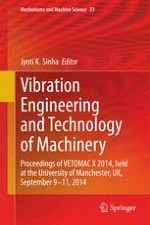2015 | OriginalPaper | Buchkapitel
Single and Multiple Crack Detection in Simply-Supported Beams Using SWT
verfasst von : Amirabbas Bahador, S. Olutunde Oyadiji
Erschienen in: Vibration Engineering and Technology of Machinery
Aktivieren Sie unsere intelligente Suche, um passende Fachinhalte oder Patente zu finden.
Wählen Sie Textabschnitte aus um mit Künstlicher Intelligenz passenden Patente zu finden. powered by
Markieren Sie Textabschnitte, um KI-gestützt weitere passende Inhalte zu finden. powered by
